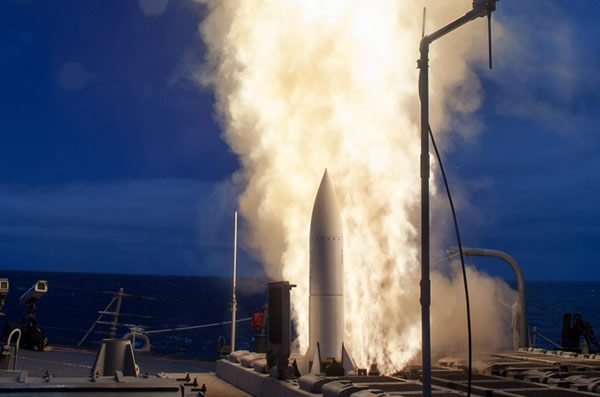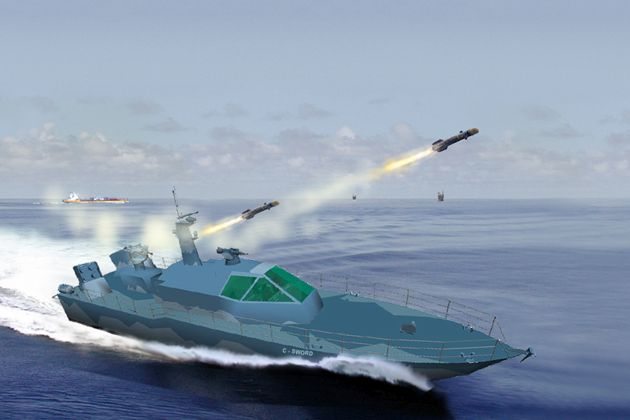During the U.S. Navy’s Combat Ship System Qualification Trials, the USS Chancellorsville (CG 62) tested two Raytheon Standard Missile-6 interceptors against anti-ship and cruise missile targets. As part of ‘engage on remote’ scenarios, the ship launched the SM-6 interceptors prior to its own radars ‘seeing’ the incoming threats, using targeting information from another Aegis ship in the area—the USS Sampson (DDG 102).
The first SM-6 intercepted a low-altitude, short-range supersonic target (GQM-163A), while the second intercepted a low-altitude, medium-range subsonic target (BQM-74E).
“Advanced warning and cueing from another sensor or ship allows the U.S. Navy to take full advantage of SM-6’s over-the-horizon capability,” said Mike Campisi, Standard Missile-6 senior program director. “Now the warfighter does not have to wait until the threat is knocking at the door to take it out. Targets are destroyed much sooner and one ship can defend a much larger area.”
Deployed for the first time in December 2013, SM-6 provides the U.S. Navy extended range protection against fixed- and rotary-wing aircraft, unmanned aerial vehicles and cruise missiles.
Raytheon has delivered more than 130 SM-6 interceptors to the U.S. Navy. The missile’s final assembly takes place at Raytheon’s state-of-the-art SM-6 and SM-3 all-up-round production facility at Redstone Arsenal in Huntsville, Ala.
About the Standard Missile-6
SM-6 delivers a proven over-the-horizon air defense capability by leveraging the time-tested advantages of the Standard Missile’s airframe and propulsion.
- The SM-6 uses both active and semiactive guidance modes and advanced fuzing techniques.
- It incorporates the advanced signal processing and guidance control capabilities from Raytheon’s Advanced Medium-Range Air-to-Air Missile.
Raytheon Company, with 2013 sales of $24 billion and 63,000 employees worldwide, is a technology and innovation leader specializing in defense, security and civil markets throughout the world. Raytheon is headquartered in Waltham, Mass.











